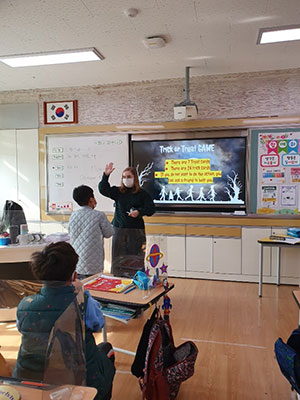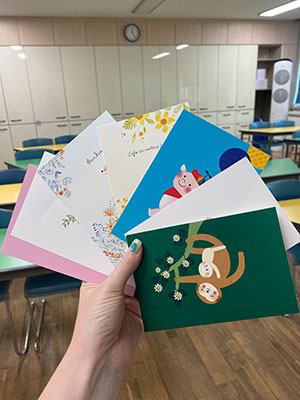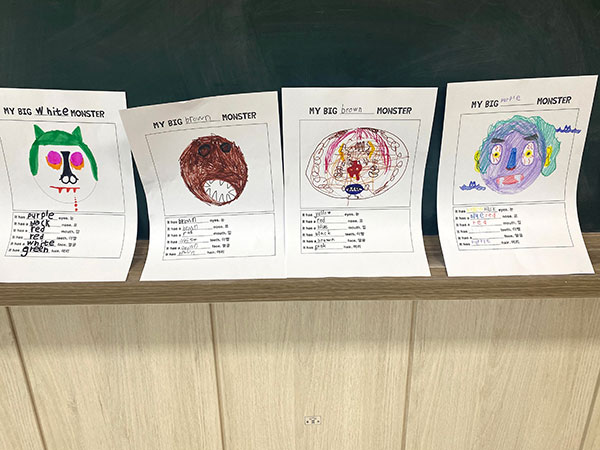-
Leaving Space for Students in the Classroom
Tatum Shannon
When I first started teaching two years ago, I was under the impression that I would be the one leading the classroom. I thought the lessons would start and end with my planning. Little did I know that the course of elementary classes— despite all of the books and worksheets, PowerPoints and English games I prepared— was charted by students. From the very first day, my students shaped my English classes with their curiosity, their interests, and their moods. If they were excited, they projected their energy into the activities I planned. When my students were having a hard day, when they were tired or frustrated, they let me know both vocally and with their body language. Even when I didn’t factor my students into my lesson plans they showed up to class and shaped the 40-minute blocks of time we spent together.
Therefore, after a bumpy first few months, I made the conscious choice to leave space for my students in the classroom. Activities became more open-ended. I started each day by asking students how they were feeling. If the resounding answer was bad, then I would follow up with more questions. And slowly, through surveys and speaking games, comics and posters, the interests of my students began to emerge. Baseball and Hip hop. Pokémon and ant colonies. BTS and sewing. I learned which students took horse riding lessons every week and which students visited their grandparents by the beach. Students talked about their upcoming BMX competitions, their unicycle academy, and their Rubix cube records. Their interests were wider and more varied than I could have ever imagined, and with each class the small window I had into the lives of my students grew larger and larger.
I teach at two small, rural elementary schools and the students rarely have a chance to use their English outside of the classroom. Therefore, this spring I decided to initiate a postcard exchange between these two schools. At first, I was unsure if my students would even be able to write enough text on the postcard, much less be excited for a project that might seem so intimidating. To my surprise, the students responded with resounding enthusiasm and were eager to meet another kid their age through the postcard project.
I did a day of pre-writing before we wrote and decorated the final postcards. After our pre-writing exercise, I collected their worksheets and settled into my desk to check what they had written. The letters written by my students ranged from sweet (I love my school and P.E. class. You should come to my school) to silly (I hate studying and I hope you hate it too). Students shared their interests (I like drawing and looking at the sky) and their future hopes (In the future, I want to be president). They were curious (Do you know how to write in cursive?) and excited (Let’s be friends)! For many of them, this was the first chance to connect with someone else their age using English.
The students asked constantly when they were going to receive their card. Finally, after two weeks, I handed out the postcards and gave students time to read. They hunched over their own postcard and then ran to compare with friends. They pointed at the drawings students had left them, small stickers stuck to the corners of the cards. They critiqued the designs students had selected. As I left their classes, I heard some students ask their homeroom teacher if they could hang the postcards up on the bulletin board.
After that first semester struggling to connect with my students and unsure of my own teaching abilities, making my classroom more open-ended is what ultimately helped me grow into a better teacher.
Now, two years later, I am so thankful for my students—for all of the times they stuck with me when I was trying out a new activity, and all of the times they threw themselves into a new project with passion and enthusiasm. If there was one thing I could tell a new teacher it would be this: listen to your students. Give them time and the opportunity to communicate with you through speaking, writing, drawing or any other medium. I guarantee they will surprise you like they surprised me. I didn’t know how much my students wanted to express themselves in the classroom until I made the conscious effort to start listening.
English Program in Korea(EPIK),Teach and Learn in Korea(TaLK)
National Institute for International Education Ministry of Education, Republic of Korea
191 Jeongjail-ro, Bundang-gu, Seongnam-si, Gyeonggi-do, 13557 Korea Tel : +82-2-3668-1400 Fax: +82-2-764-1328
National Institute for International Education Ministry of Education, Republic of Korea
191 Jeongjail-ro, Bundang-gu, Seongnam-si, Gyeonggi-do, 13557 Korea Tel : +82-2-3668-1400 Fax: +82-2-764-1328






